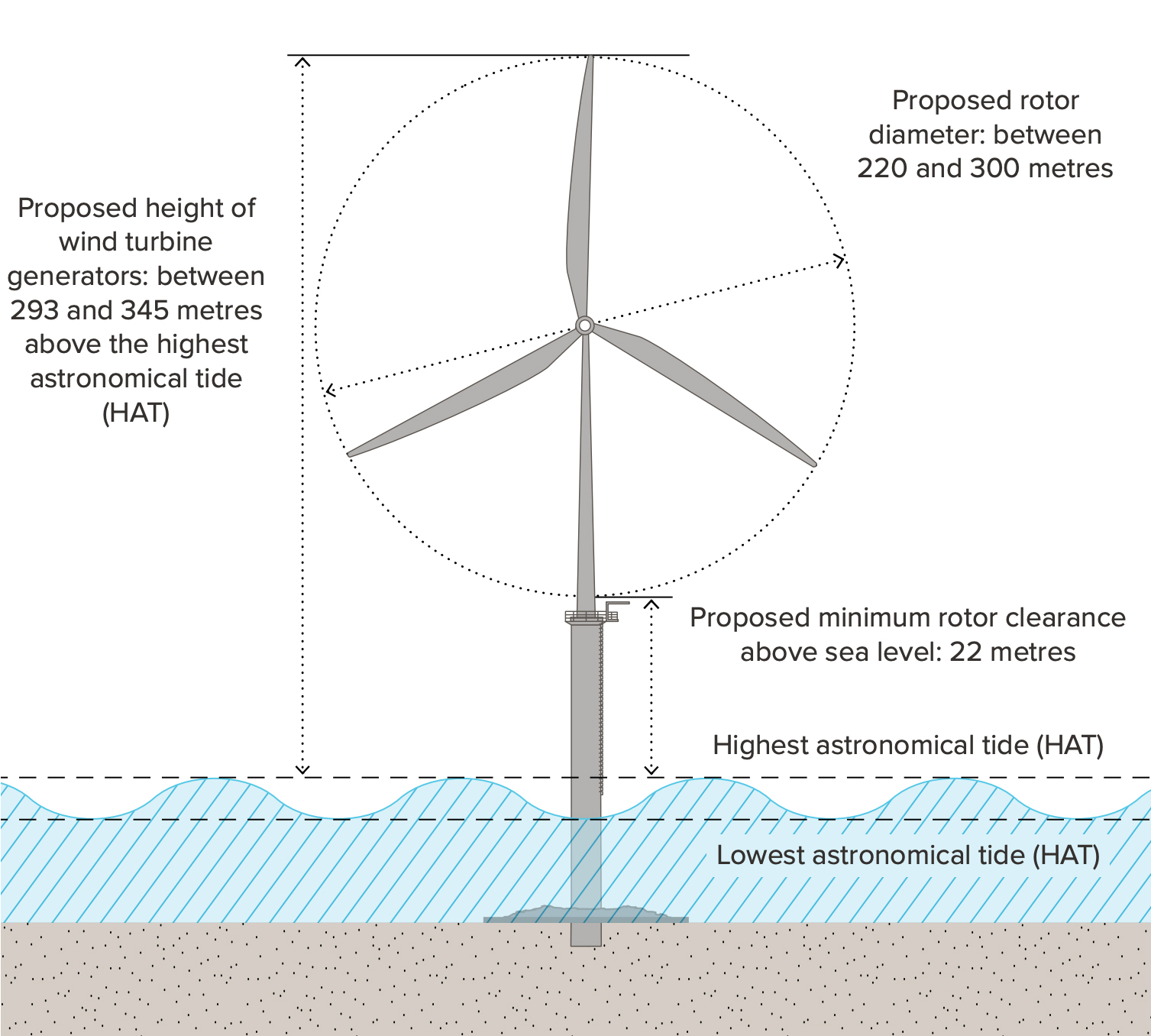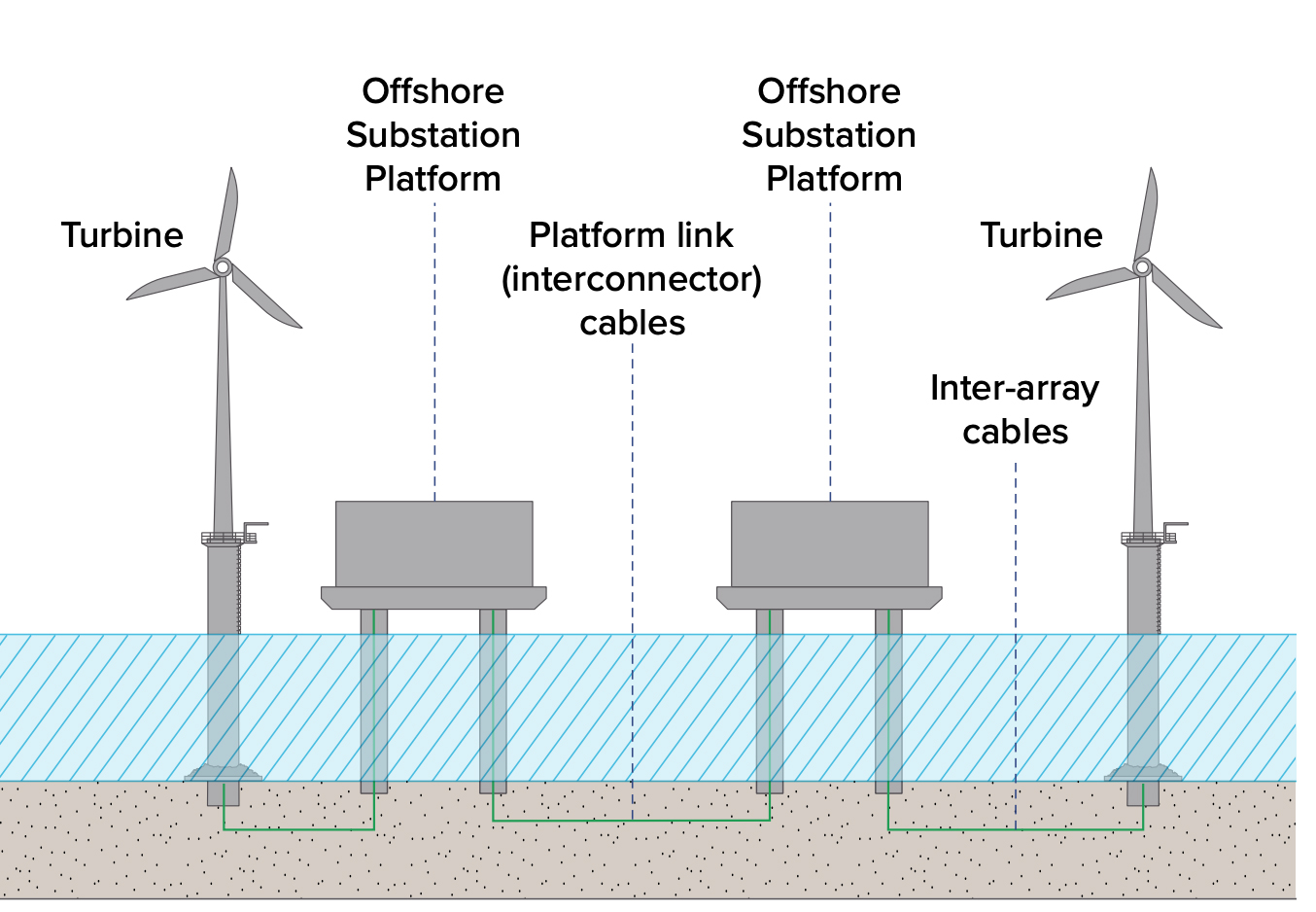What the Project will look like
We expect that the Project will comprise of the following elements:
- Up to 40 wind turbine generators (WTGs)
- Up to two offshore substation platforms (OSPs)
- Platform link (interconnector) cables
- Inter-array cables
WTGs and OSPs will be located within the offshore windfarm site and be fixed to the seabed with foundation structures.
Inter-array cables will connect the WTGs to each other and carry renewable energy to the OSPs. The OSPs will convert the power to a suitable voltage. This is then transferred into the electricity transmission network via the existing National Grid substation at Penwortham in Lancashire
For more information about the transmission part of the project and why a separate DCO application is needed for this, visit transmission.
WTGs will be set out in rows. The minimum space between each individual WTG in a row is estimated to be around 990 metres (0.99 kilometres). The minimum space between each row of WTGs is estimated to be around 1,760 metres (1.76 kilometres).
The seabed conditions and the presence of existing infrastructure will influence the final layout of the WTGs within the site boundary. This may lead to an increase in the gaps between turbines and rows (as described above).

Indicative diagram of what a typical WTG could look like. Actual design may differ. The above image is not to scale and for illustrative purposes only.
Contact us
Should you have any queries, please get in touch with us using one of the methods below:
- Email us: hello@morecambeoffshorewind.com
- Call us: 0800 915 2493 (option 2)
- Write to us: FREEPOST MORECAMBE GENERATION
Visualisations
The size, number and positioning of our turbines have yet to be decided. But at this early stage we’ve created indicative 3D visualisations to show potential views of the Morecambe Offshore Windfarm from a range of onshore locations.
View map
The components of Morecambe Offshore Windfarm Generation Assets
This information is based on our current understanding of the Project and will be refined ahead of submitting our DCO application. These numbers are assuming the generation of 480MW of electricity.
| Fast facts: WTGs | |||||||||||
|---|---|---|---|---|---|---|---|---|---|---|---|
|
|
||||||||||
| Fast facts: OSPs | |||||||||||
|
|
||||||||||
| Fast facts: Inter-array cables | |||||||||||
These are installed to connect individual WTGs and also to connect the wind turbine generators to the OSPs.
|
|
||||||||||
| Fast facts: Platform link (interconnector) cables | |||||||||||
Should the project require two OSPs, platform link cables will be needed to connect each OSP to enable the transfer
of electricity. They would also ensure that electricity transmission can continue in the
unlikely event that a cable or OSP should unexpectedly fail.
|
|
||||||||||
For more information about how we plan to build the Project, please see our PEIR on our Information Hub.